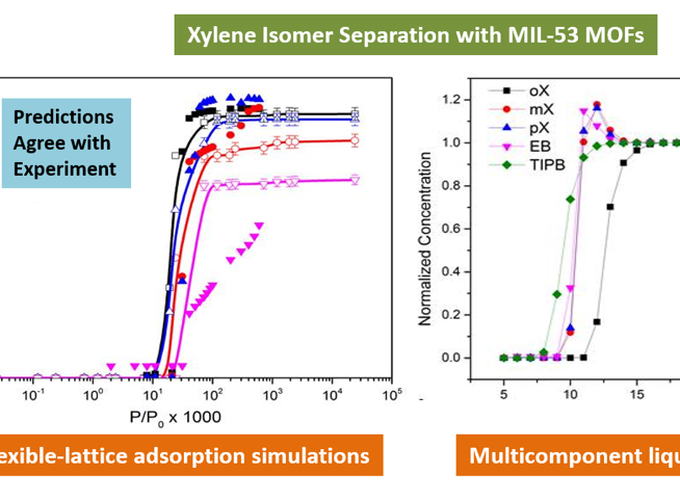Abstract
Cost-effective separation of xylene isomers is challenging owing to the similarity in their molecular structures, kinetic diameters and boiling points. Recently, the MIL-53 class of metal-organic frameworks (MOFs) has generated interest as potential adsorbents for xylene mixture separations. Here we report a systematic experimental and computational study of xylene isomer adsorption in MIL-53 adsorbents, focusing particularly on the effects of different metal centers, determination of separation properties with industrially relevant quaternary liquid-phase C8 aromatic feeds, and a predictive molecular simulation methodology that accounts for all relevant modes of MIL-53 framework flexibility. Significant scale-up of MIL-53 synthesis was carried out to produce high-quality materials in sufficient quantities (300-500 g each) for detailed measurements. Single-component adsorption simulations incorporating the MIL-53 ‘breathing’ and linker flexibility effects showed good agreement with experimental isotherms. Based upon these results, three materials – MIL-53(Al), MIL-53(Cr) and MIL-53(Ga) – were selected for detailed quaternary liquid breakthrough measurements. High o-xylene quaternary selectivity was obtained from all the MIL-53 materials, with MIL-53(Al) being the most selective. Better packing efficiency of o-xylene and its preferred interactions with the MIL-53 framework are hypothesized to lead to high selectivity. Predictions from flexible-structure multicomponent adsorption simulations showed good overall agreement with experiment. This is, to the best of our knowledge, the first experimental report on the xylene separation performance of MIL-53 adsorbents under industrially relevant operating conditions. In addition, it is also the first attempt to develop computational methods that account for various flexibility modes in MIL-53 materials for adsorption simulations. This has significant broader applications for the successful prediction of adsorption properties of larger molecules (such as C8 aromatic isomers) in flexible MOFs.
